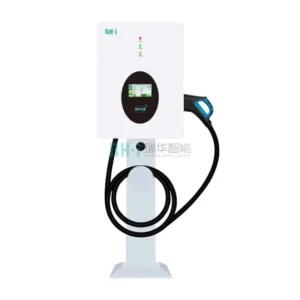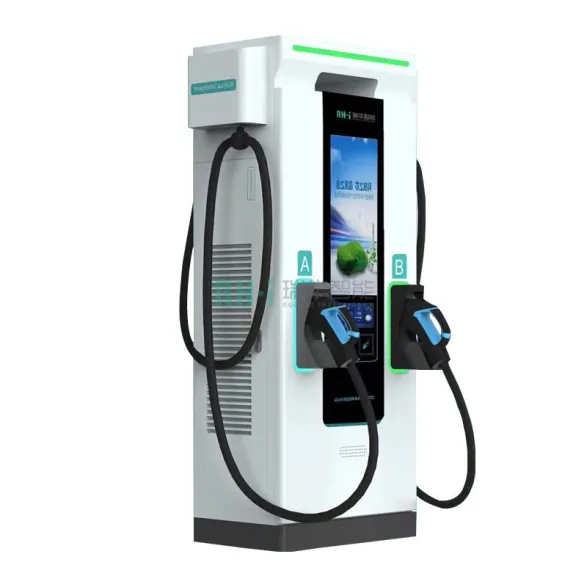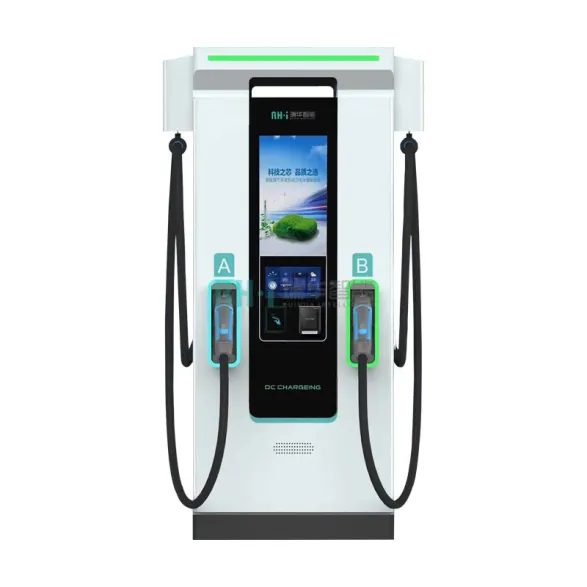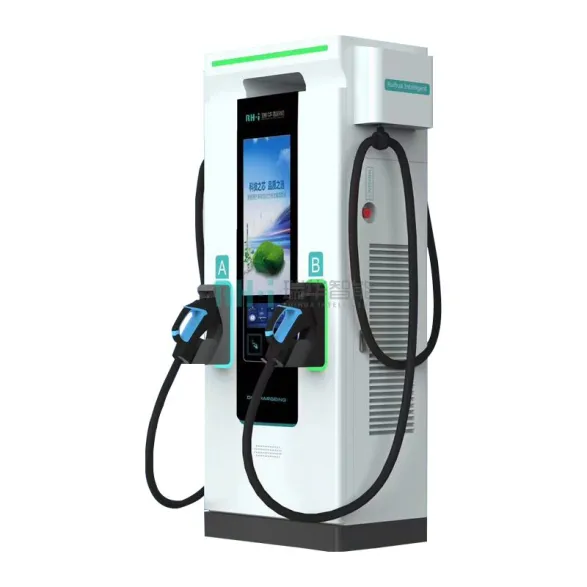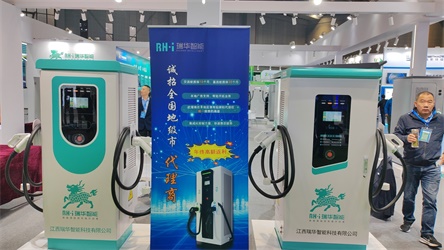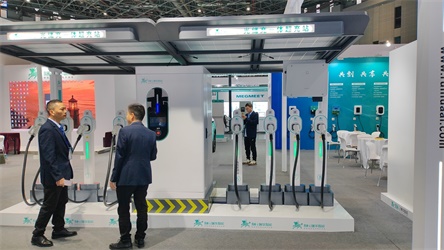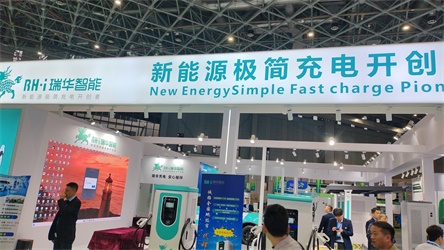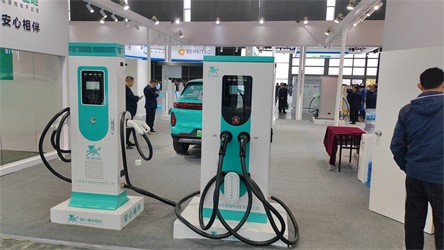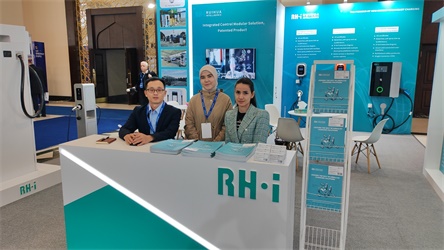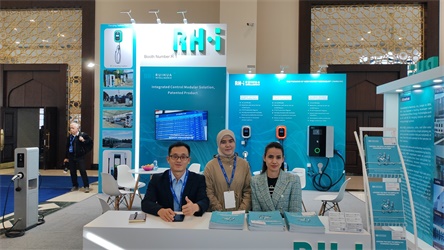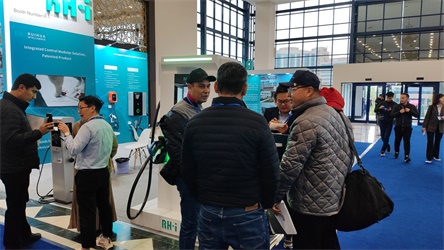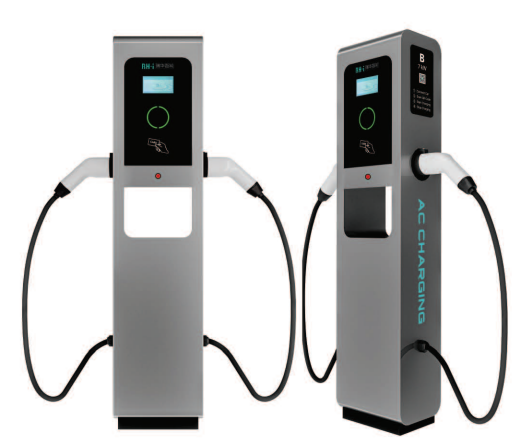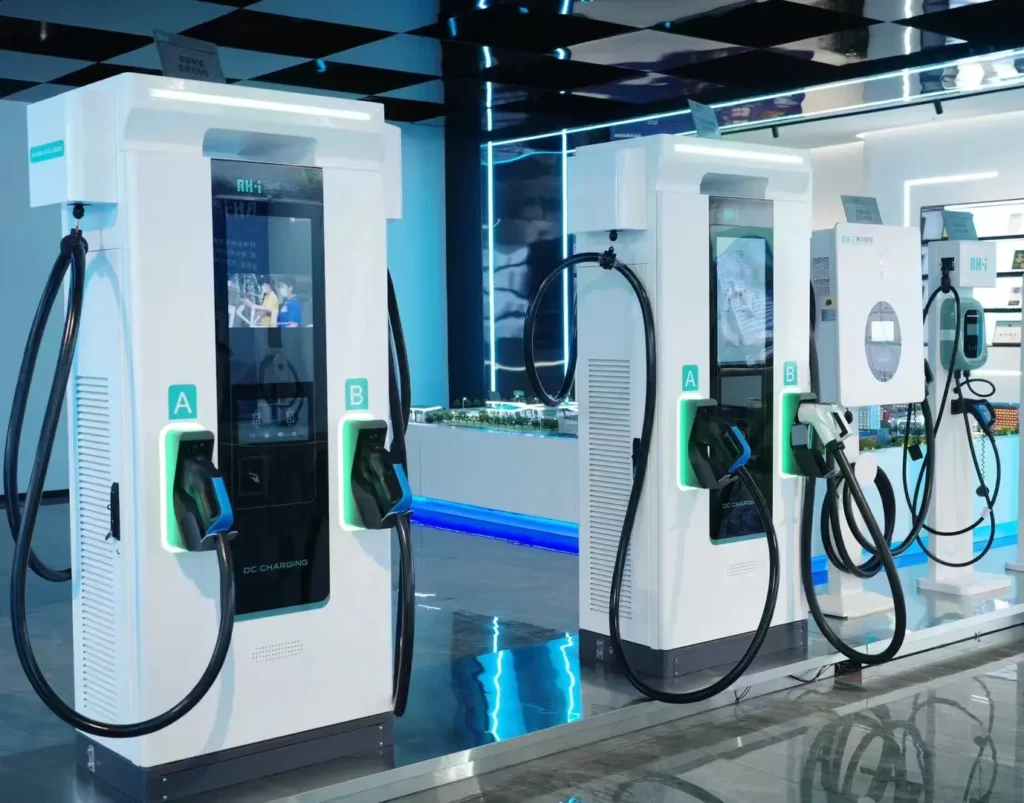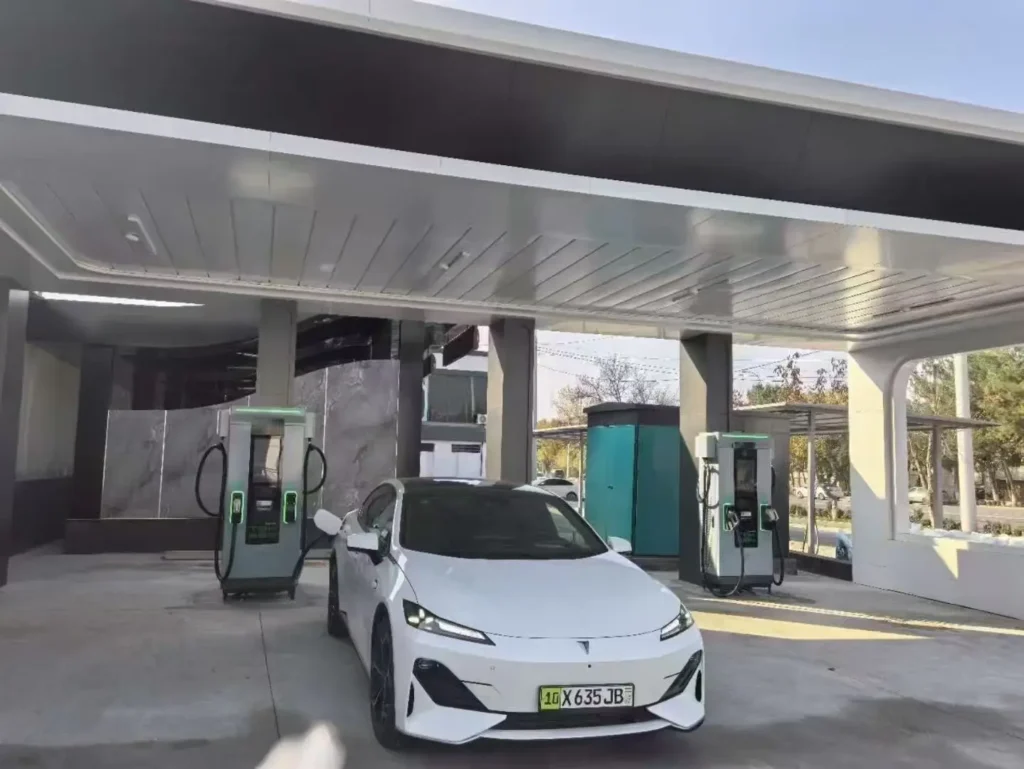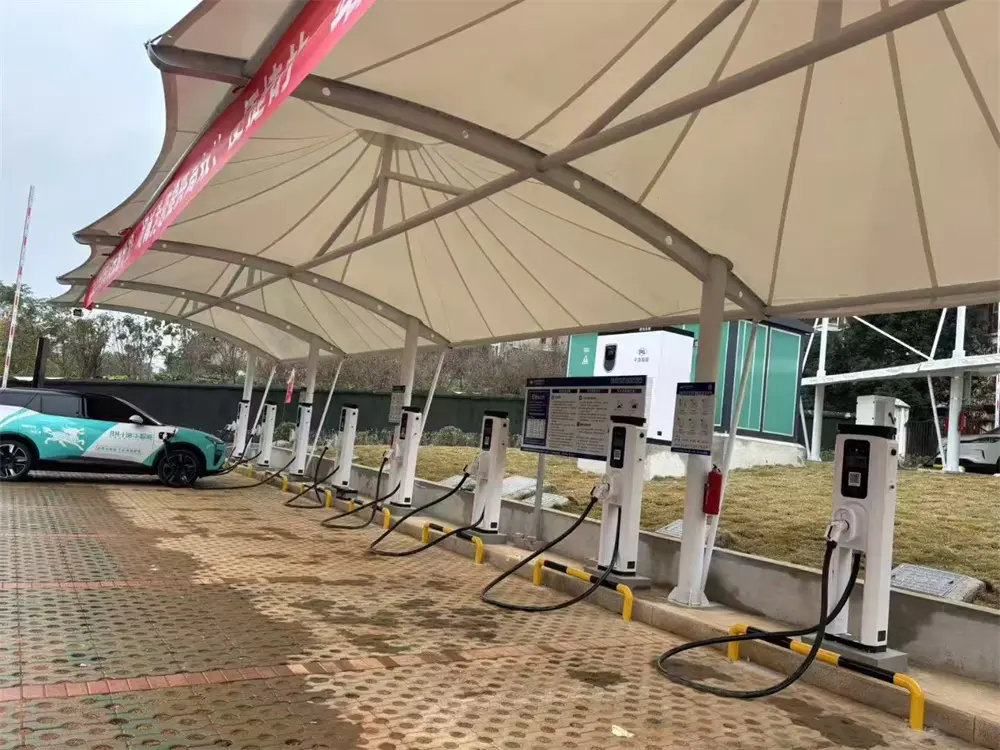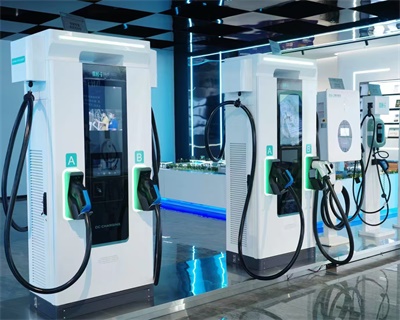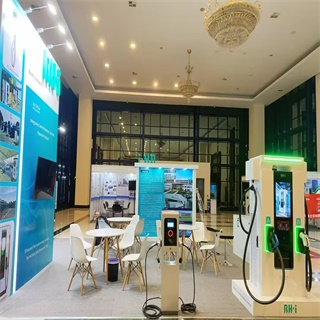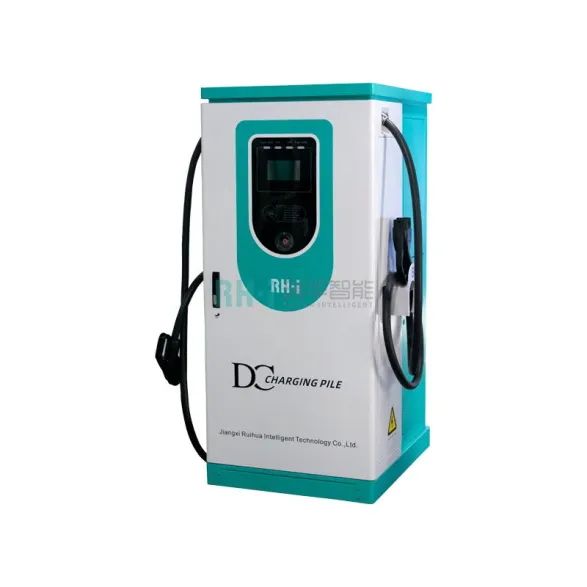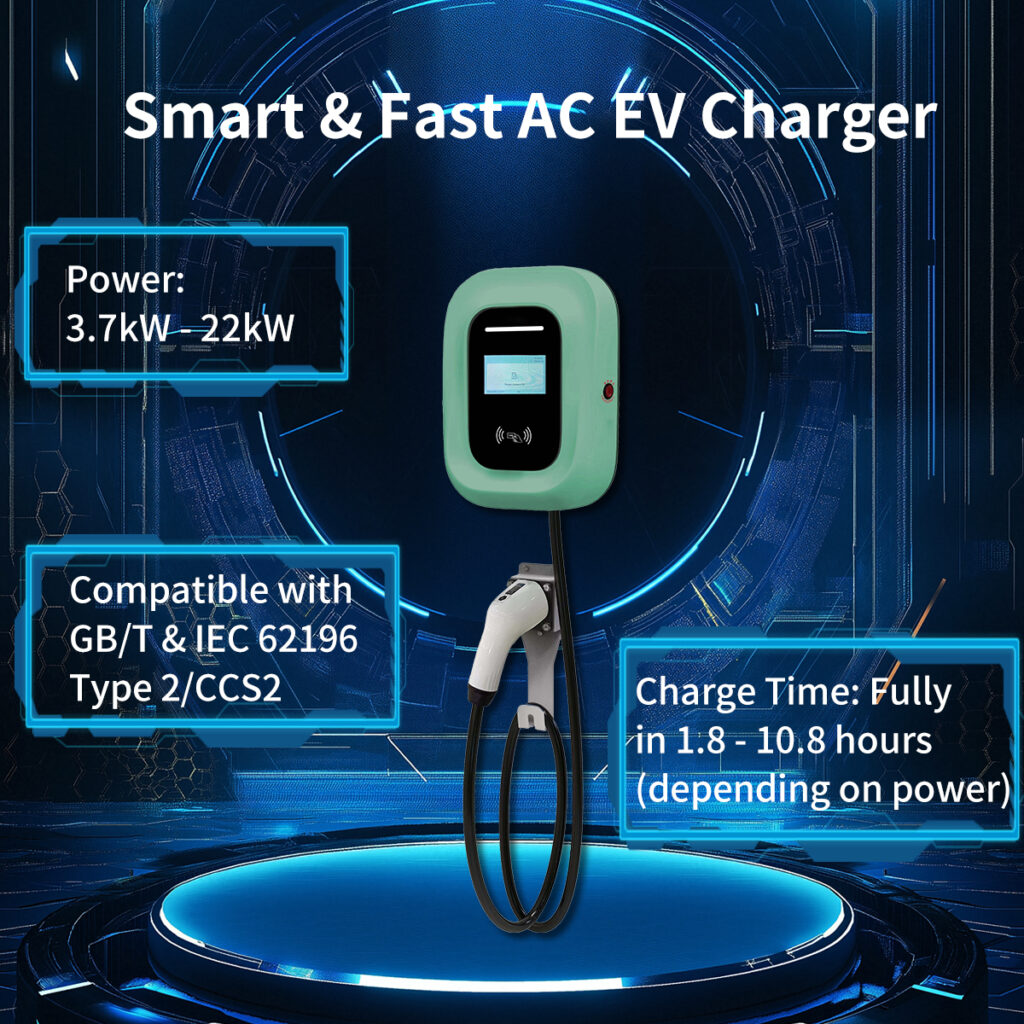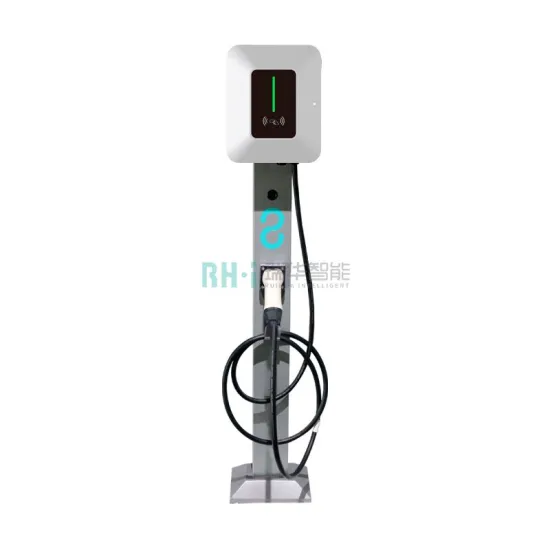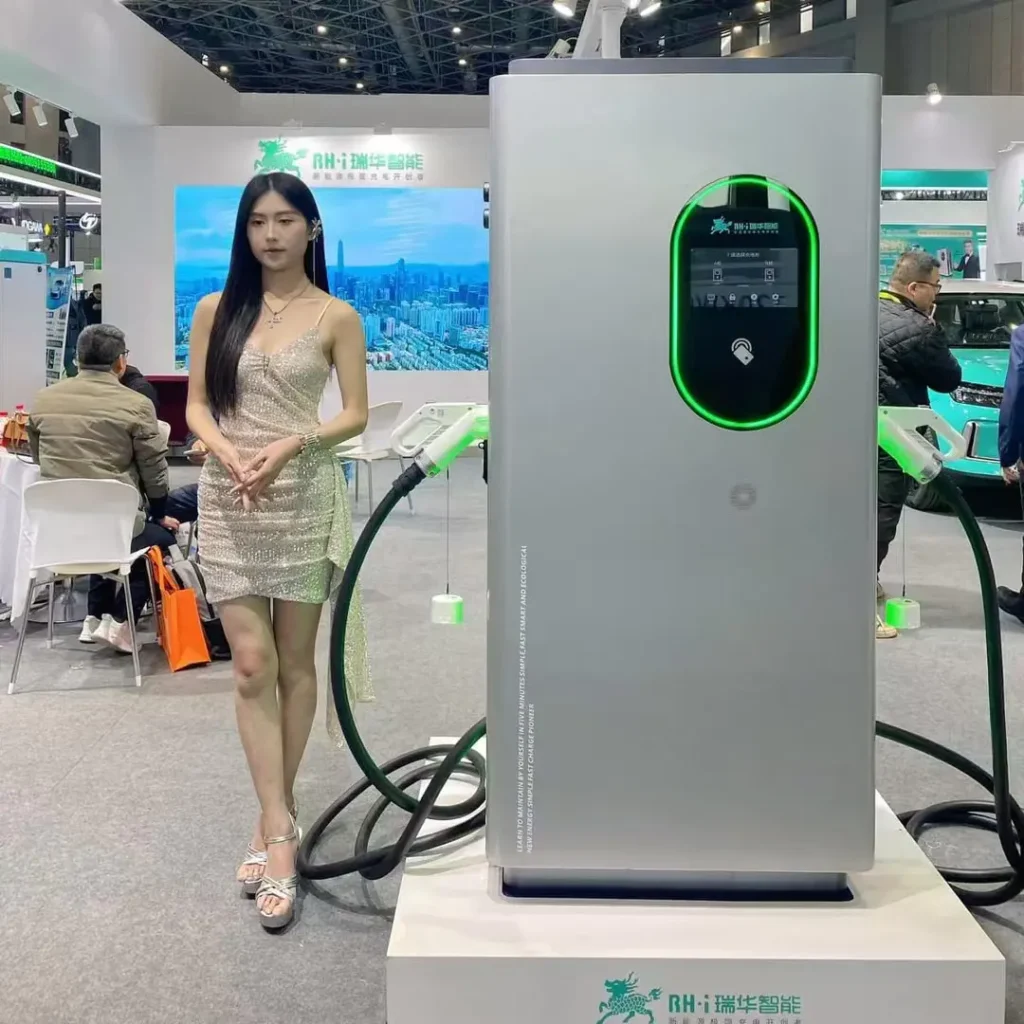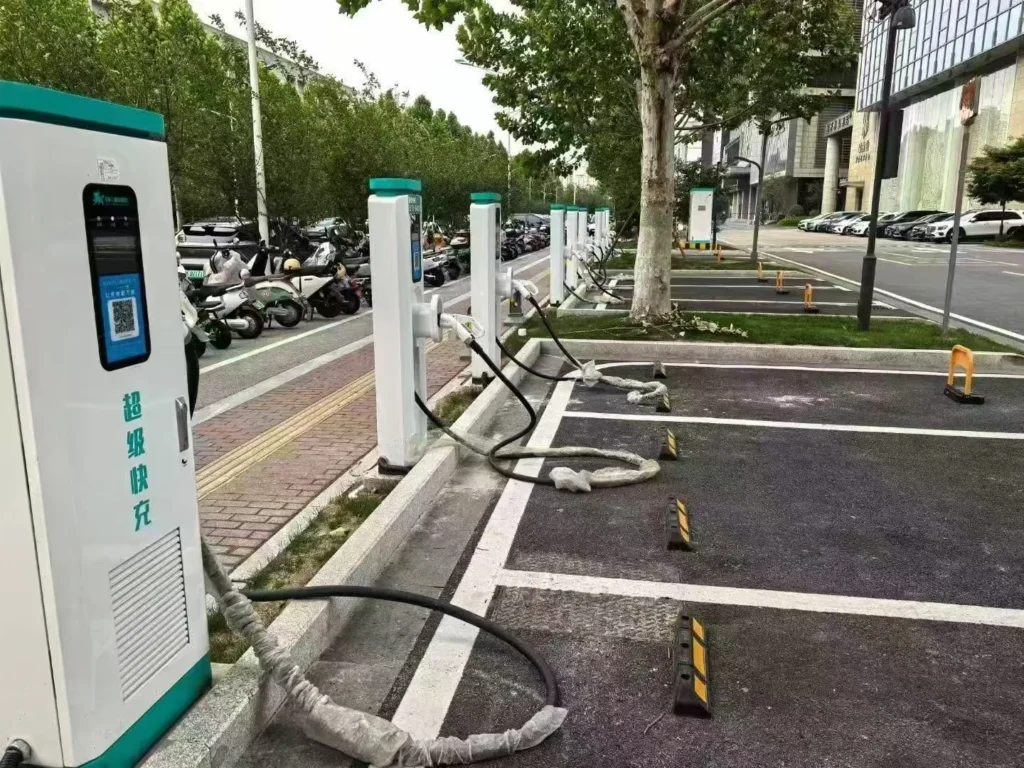Changing the norm. Charging the future
We empower your transition to electric mobility with our complete EV car charging station solutions.
EV Car Charging Station Companies | RUIHUA
RUIHUA is a premier EV charging station manufacturer founded in 2018 with dual hubs in Shenzhen (R&D) and Jiangxi (72,000m² production base). As a China High-Tech Enterprise, we specialize in AC/DC chargers (7kW-350kW), charging cabinets, and power supply systems with full OEM/ODM customization. Our patented Integrated EV Charger technology redefines industry standards through simplified, high-efficiency solutions.


Certified with ISO9001, CE, RoHS, and IP65 standards, RUIHUA serves global partners including car dealers, fleet operators, and energy providers. We support all major charging interfaces (Type 2/CCS2/GB/T) and deliver comprehensive solutions from hardware to smart charging software.
Charging Stations for EV Cars
An EV car charging station is a dedicated infrastructure that provides electric vehicles (EVs) with the electricity they need to operate. These stations come in various types and power levels, from home-level chargers to public fast-charging stations.
30kw DC EV Charger, Charging Station
Protection level: IP54
Number of guns: single gun design
Charging interface: CCS2, CHAdeMO, GB/T, etc.
50kw EV charger price, DC Fast Charging Station
Protection level: IP54
Number of guns: dual gun design
Charging interface: CCS2, CHAdeMO, GB/T, etc.
60kw DC Fast Charger Price, EV Charging Station
Protection level: IP54
Number of guns: dual gun design
Charging interface: CCS2, CHAdeMO, GB/T, etc.
100kw DC Fast Charger Price, EV Charging Station
Protection level: IP54
Number of guns: dual gun design
Charging interface: CCS2, CHAdeMO, GB/T, etc.
120 KW DC Fast Charger Cost, EV Charging Station
Protection level: IP54
Number of guns: dual gun design
Charging interface: CCS2, CHAdeMO, GB/T, etc.
150kw Charging Station, DC Fast Charger Cost
Protection level: IP54
Number of guns: dual gun design
Charging interface: CCS2, CHAdeMO, GB/T, etc.
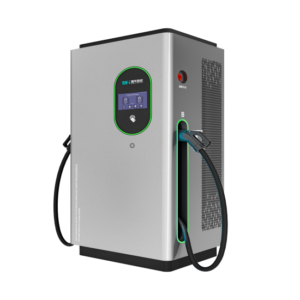
180kw DC Fast Charger, EV Charger
Protection level: IP54
Number of guns: dual gun design
Charging interface: CCS2, CHAdeMO, GB/T, etc.
350 KW EV Charger Price, DC Fast Charging Stations
Protection level: IP54
Number of guns: dual gun design
Charging interface: CCS2, CHAdeMO, GB/T, etc.
Company Partners
Customize Your eV car charging stations Now:
We offer a wide range of EV chargers, including over 200 models, and also provide customized solutions tailored to your specific needs.
Ruihua Oversea eV car charging station Equipment Market
The cost or price of an EV car charging station is influenced by factors such as the type of charging station (AC slow charging, DC fast charging), location, and rated power. The following is an overview of the cost range based on key factors:
AC slow charging stations (7kW-22kW): Suitable for residential or light commercial use. Equipment cost: $100+/unit.
DC fast charging stations (30–480kW+): For example, a 120kW dual-gun station costs approximately $15,00 to $2000 per unit, a 320kW heavy-duty truck station costs approximately $4,000 per unit, and a liquid-cooled ultra-fast charging station (600kW+) can reach $10,000+ per unit.
The above prices are for reference only; please contact us for specific pricing.
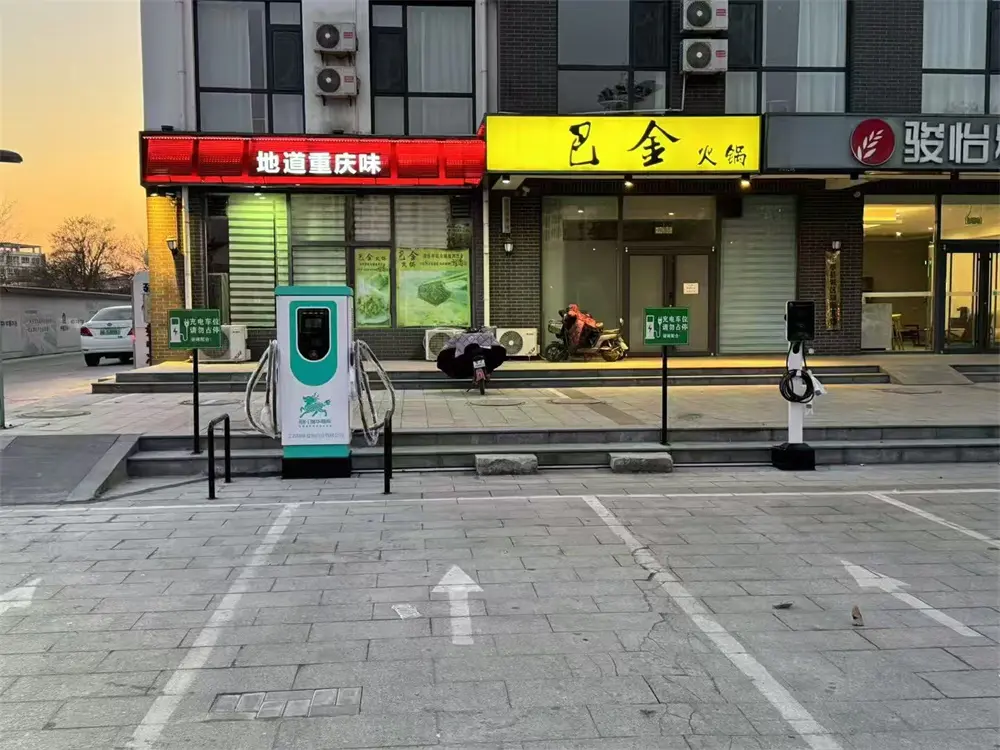
Grants, Costs & Funding in Southeast Asia
ASEAN plans to launch a unified electric vehicle standard (including battery technology and cross-border charging protocols) in May 2025. Chinese companies need to adapt to the OCPP 1.6J protocol and European standard interface in advance.
| Country | Core incentive policy | Strategic Window |
| Thailand | BOI exempts charging pile operators from corporate income tax for 8 years; CBU electric vehicle tax exemption policy will be extended in 2025 (expiring at the end of the year). | Seize the window before the end of 2025 |
| Malaysia | Import tax exemption + charging piles below 160kW are included in the subsidy scope (covering small and medium-sized businesses). | Policy will continue until 2030 |
| Indonesia | Electric vehicle purchase tax is completely exempted, and charging pile construction enjoys a 30% cost subsidy (needs to be matched with localized production) | Localization requirements will be implemented in 2026 |
| Cambodia | Charging equipment import tax exemption, foreign investment is allowed to hold 100% of the shares (electric vehicle penetration target is 40% in 2050) | Opportunities in the infrastructure gap |
Ruihua eV car charging station History
◆ Year 2006 – The predecessor of Jiangxi Ruihua brand: Shenzhen DongshunQian Technology Co.,Ltd was founded.
◆ Year 2010 – Introduced advanced Facilities: Numerical Control Press and Large Spraying Machine.
◆ Year 2014 – Take over a big automatic spraying factory in Dongguan. Meanwhile, Introduced Germany Large laser cutting machine.
◆ Year 2016 – Established EV Charger Division, Pass ISO9001 Quality Management System.
◆ Year 2018 – Established the plant in Jiangxi Province and gained 18 patents in one and half an year.
◆ Year 2021 – Launch the first global patent unit- Integrated module controlled EV charger, Lead the EV charger industry revolution.
◆ Year 2022 – The 5th Generation DC EV charger awarded the honor of “Specialized, Refinement, Differential and Innovation.

Why Choose Ruihua eV car charging station?
Professional EVSE manufacturer with 16+ years of experience
AC & DC chargers from 7kW to 350kW+
Products certified with CE, RoHS, IP65, IK10, etc.
In-house factory with skilled workers and strict quality control
Fast delivery and strong after-sales support
Support OEM/ODM services for global partners
Ruihua EV car charging station Factory View
RuiHua operates an 80,000+ m² factory with 400+ employees, producing 30,000+ charging units annually (output: 300M RMB). Equipped with automated SMT lines, robotic welding, and smart testing systems, we ensure high-quality AC/DC chargers (7kW–350kW). Our 10+ production lines support fast prototyping (15–30 days) and OEM/ODM customization. Products meet CE, RoHS, CB, and GB/T standards for global markets. Partner with us for scalable, cost-effective EV infrastructure solutions.
Ruihua EV car charging station Showroom

Certificate
Insist on“Quality come first” and strict management protocal, We have passed the ISO9001 Quality Management System in 2018.
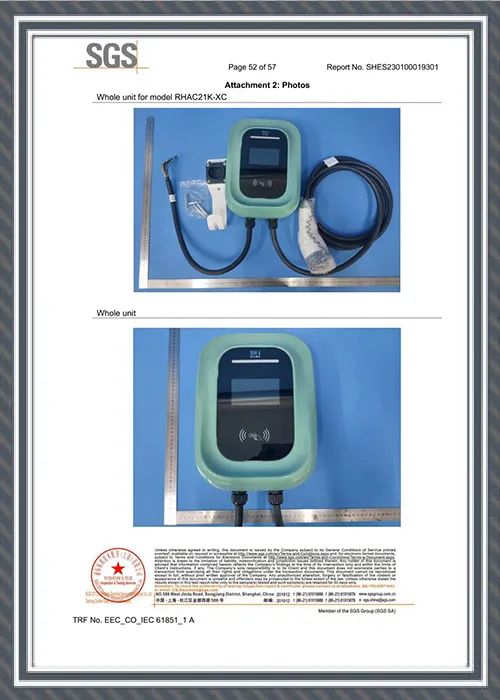
SGS II Certificate

ISO9001
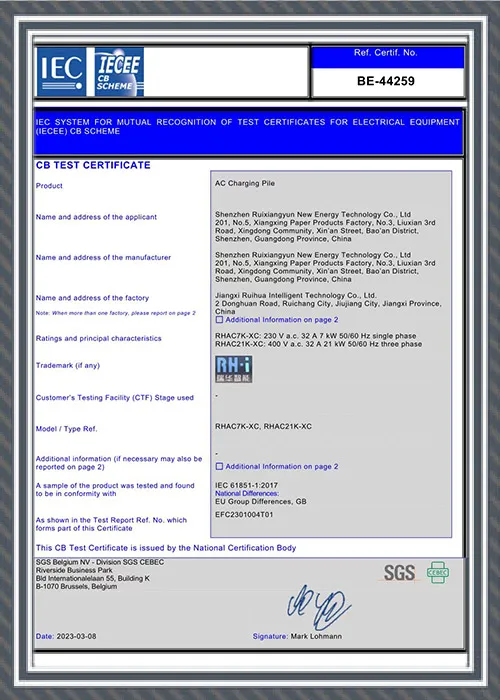
CE Certificate(IEC 61851-12017)

SGS CE Certificate
Research & Development
RuiHua is committed to innovation and quality through advanced research and development capabilities. Our state-of-the-art laboratories and equipment ensure every product meets global standards and delivers exceptional performance. Highlights of our R&D capabilities include:
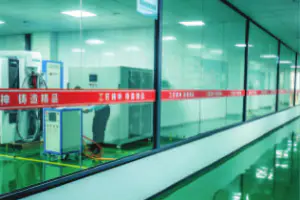
Laboratory(Outside)
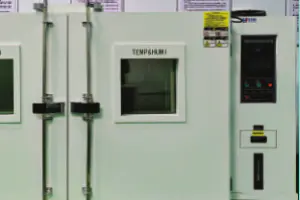
AC charging lab

High/Low temperature testing chamber

Humidity testing chamber
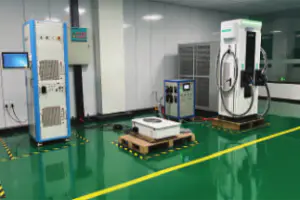
EU/US standard product testing
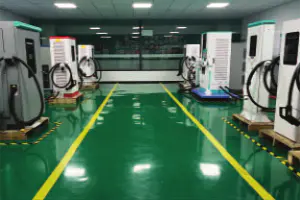
GB/T testing

Oscilloscape

High/Low temperature testing chamber

Vibration tester

Insulation resistance meter

Infrared thermometer

Multimeter
Our Mission
Ruihua’s EV Connect Solutions exemplify innovation in sustainable mobility, offering a comprehensive charging ecosystem for residential, commercial, and industrial applications. As a National High-Tech Enterprise founded in 2018, Ruihua integrates advanced R&D with scalable manufacturing to deliver IoT-enabled, high-efficiency charging piles (7kW–350kW), supporting global electrification goals.
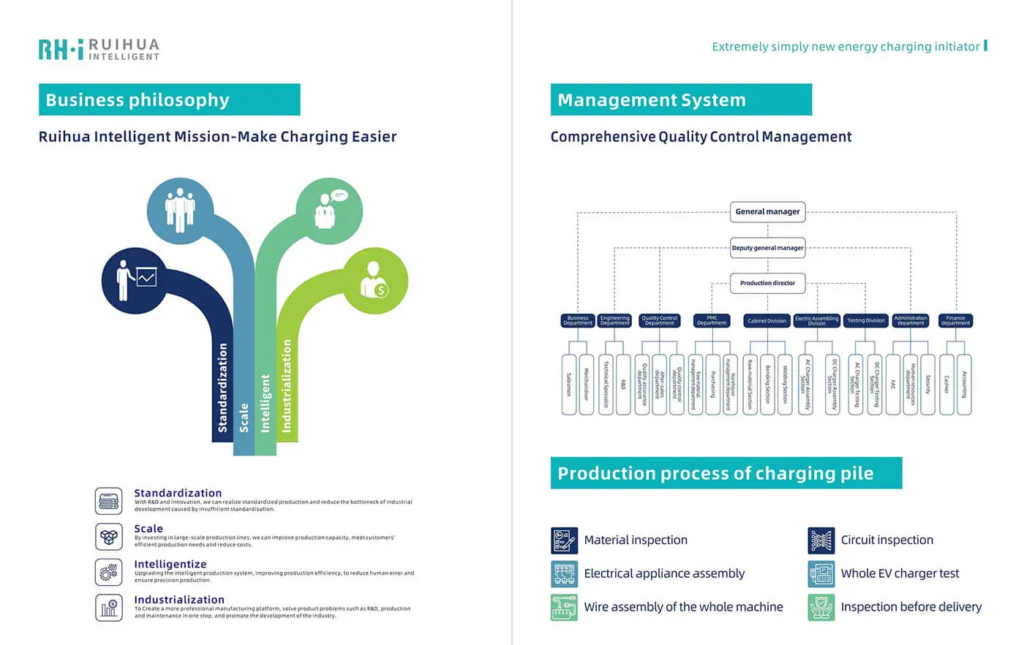
Team Style and Overseas Exhibitions
RuiHua actively engages in global exhibitions to demonstrate its leadership in EV charging innovation, aligning with its mission to accelerate sustainable mobility. Key participation highlights include:
Missed the expo?
Feel free to contact us for more information about our solutions.

